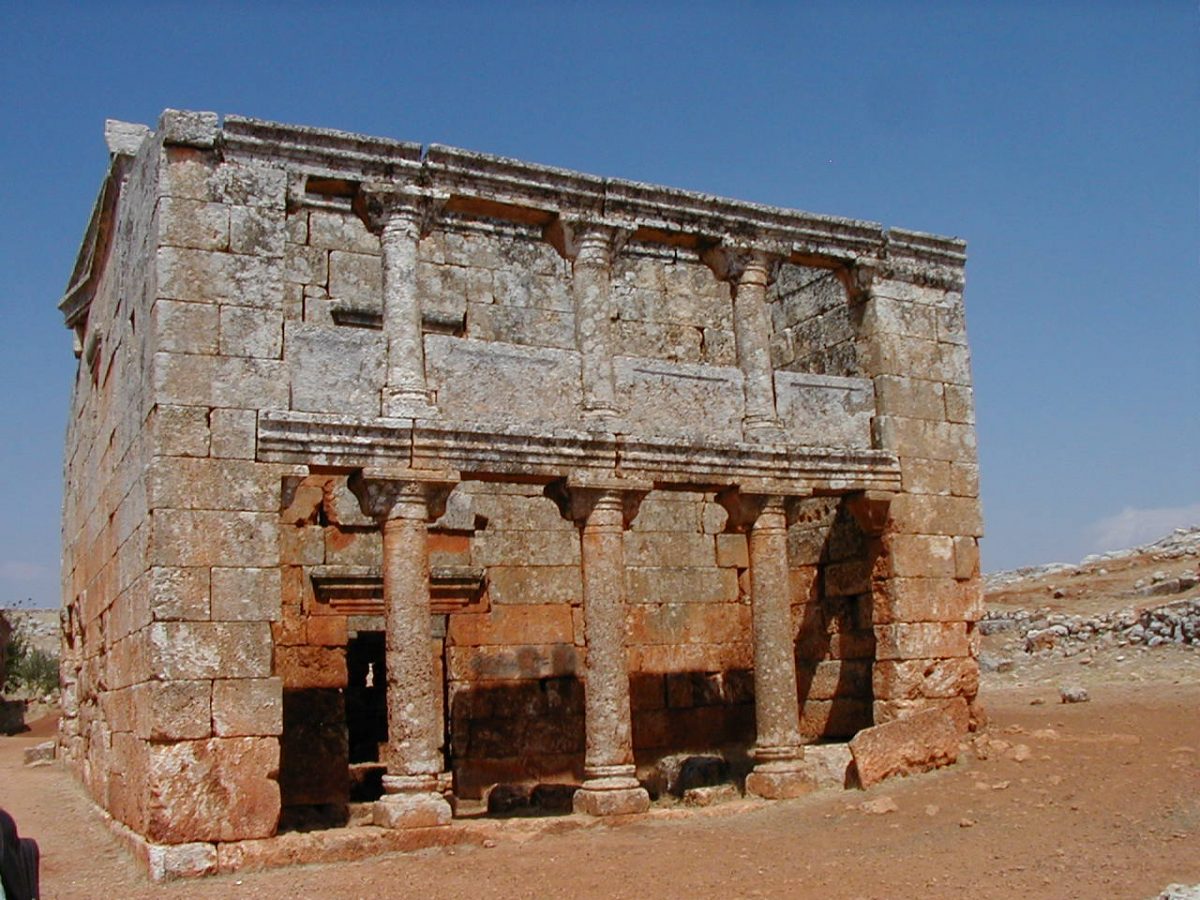
I was scrolling Twitter when I came across a video of a fighter in Syria wasting ammunition to destroy an ancient Byzantine building.
Jihadists in Idlib, Syria, destroy what’s left of a Byzantium era archaeological building in Deir Sunbul.
The site is part of the “Dead Cities,” and is on UNESCO World Heritage List.https://t.co/LozBibwuIG pic.twitter.com/DE54KKOHQk— Mekut (@Mekut_Mallet) August 15, 2018
Deir Sunbul is part of the “Dead Cities” UNESCO world heritage site. Mekut, the poster of the video, informed me that the site had previously been damaged in the war. According to a report:
“The ruins at Deir Sunbul are scattered among modern houses, and include several villas, dozens of tombs, and a badly ruined church. Many of these structures bear inscriptions, usually of a Christian nature. The few dated inscriptions at Deir Sunbul are from the early 5th century. The two-storied villa in question was described by archaeologist Howard Butler Crosby in 1900 as “the most beautiful of all the residences in the region.” This villa bears no dated inscription, but its style suggests it was built in the 5th or 6th century.”
The Dead Cities Wikipedia page has quite a good list of all the sites in the Dead Cities, though I can’t help but think that if there was enough content, and enough sources online, that many of these sites should have their own Wikipedia pages. Perhaps they will eventually.
Anyway, at the moment, most of the sites recorded don’t have any media associated with them. Mekut, the poster of the tweet that peaked my interest, suggested I contact the historian Qalaat Al-Mudiq, who knows a lot about the area’s history. I discussed the problem of a lack of content being available for Wikipedia to record these sites adequately, and Qalaat showed me some photos he had taken in 2002 of buildings in the Dead Cities.
I explained how to upload these to Commons, and helped him to do so. You can see the category for photos of the Dead Cities here. I have also contacted some archaeological teams that were working in the area before the Syrian Civil War began, and hope that some of these contacts may have more content they are willing to release on Open Licenses.
According to Al-Mudiq, the “dead cities” “actually 150+ Byzantine villages in Jebal Zawiyah”, so I did a bit more searching and found a number of Western travellers who had been to the area before the war, including a Lonely Planet Editorial Director and a travel writer who wrote about the area for the Guardian in 2010. I’m following up with them to see if they have more photos that they could publish on Commons for us to use.
I find this kind of investigation quite interesting and rewarding, both from a journalistic perspective, and as an exercise in outreach to tell people how Wikipedia can be used to record these sites, and as a place where photos can be shared with the world. Most travel photography from the early years of digital photography, or from analogue cameras, will not be of a standard that makes it commercially marketable. If we can convince more people to publish their valuable photos of historical places on Commons, we can show the world how Open Licenses can make old photos that were not thought to be of much valuable useful for recording history and educating the world.
Most people don’t stop to think about copyright, and how it limits the usefulness of so much of the media we produce. That’s why we recently produced this short video explaining the history of copyright, which we encourage you to share.
Just think how many people there are with valuable historical photos who have never considered publishing them on Open Licenses. With places like Syria, the need for these images to be Open so we can record endangered cultural heritage is more important than ever.
Furthermore, we are gearing up for this year’s Wiki Loves Monuments competition. Syria, along with Jordan, Palestine, Lebanon and Iraq, are all participating countries in the competition. This means that if you have photos of heritage sites and monuments from these areas, you can upload them to Wikimedia Commons to participate in the competition.

We would love to hear about it if you have photos from these countries that you might like to upload. If you aren’t sure how, you can visit wikilovesmonuments.org.uk for more info, or simply get in touch with us via email or social media. So why not have a look through your drawers of old photos? There could be something in there which could be used to illustrate a Wikipedia page which would be read by millions of people.






